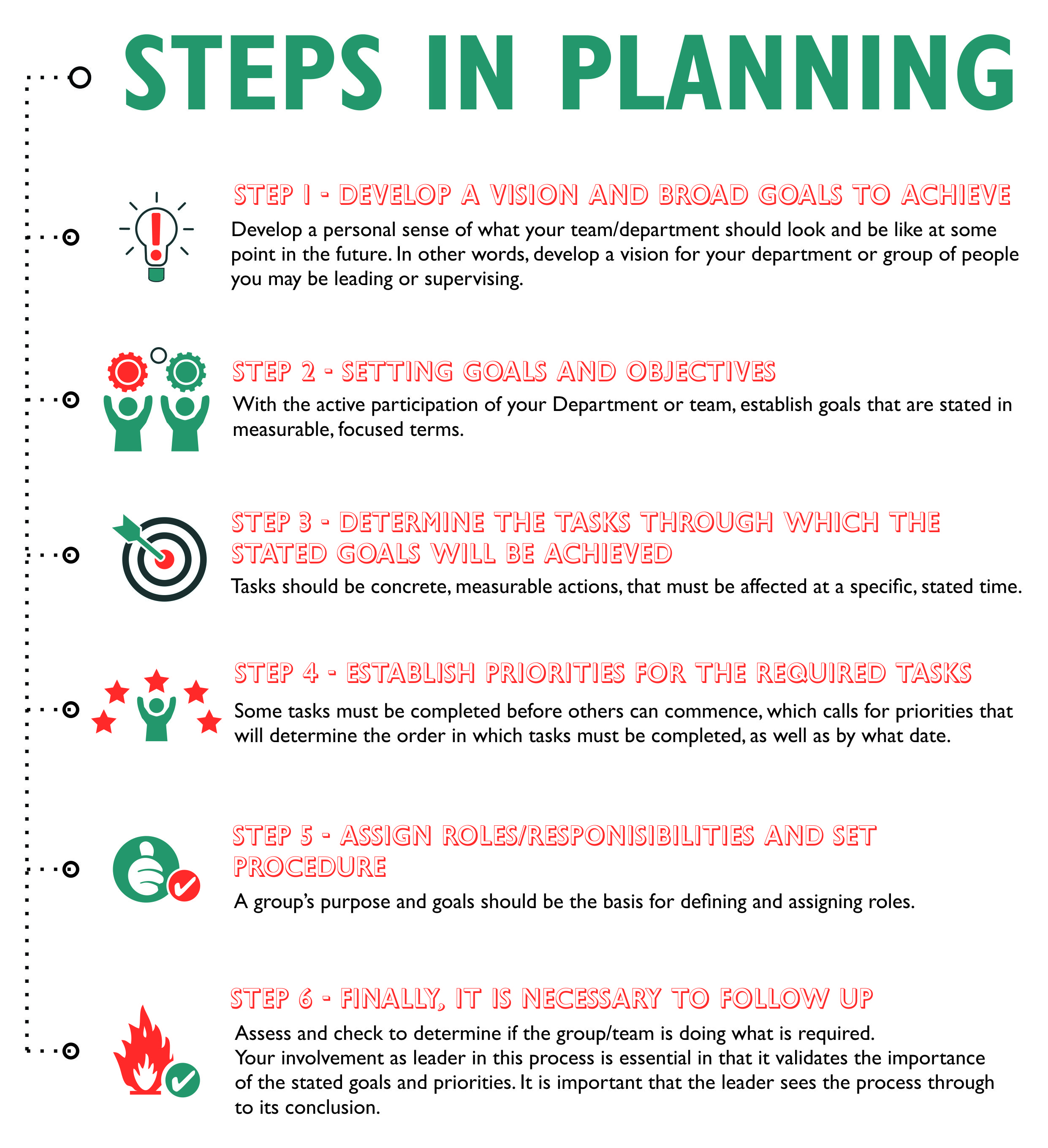
Step One - Develop a Vision and Broad Goals to Achieve
Develop a personal sense of what success in the project or the process that you are planning would look like. Be specific as to what success would be like.
Step Two - Setting Goals and Objectives
Establish (if applicable, with the active participation of your Department or team) goals that are stated in measurable, focused terms.
Goals and objectives are intentions and contain descriptions of situations or conditions that are to be achieved within a specific period. They contain clear indication of what we want to achieve and how to go about it. It is important to write down our goals and objectives as well as to develop a well set-out plan, detailing how we intend realising them. This will enable us to experience a measure of accomplishment now for goals that will only be fully realised in the future. Such a process will stimulate action and will keep us motivated, leading to unbelievable results.
Ensure that GOALS are SMARTER.
If we think of this exercise as enabling us to act more decisively with a better chance of putting ideas into action, it is a process that makes us SMARTER.
A well-formulated objective statement is:
Specific – It clearly states the desired outcome.
Measurable – The objective must be quantified to be measurable.
Achievable – It falls within the realm of the possible, and can, realistically, be attained.
Results-oriented – Through taking specific actions, outcomes can be realised.
Time-bound – It contains a clear deadline.
Exciting – The objectives must excite participants.
Recognised – Objectives must grow from a process of participation and must be in line with vision, motivators and purpose (individual/organisational).
Step Three - Determine the Tasks Through Which the Stated Goals will be Achieved
Tasks should be concrete, measurable actions, that must be affected at a specific, stated time.
Action plans provide a method for identifying who needs to do what and when in what order to accomplish an objective. In other words, action plans outline and sequence the steps and the resources (people, money, time, and equipment) needed to achieve the performance objective.
Action plans are a valuable tool for setting up performance since they specify exactly what needs to be done by when and help both manager and employee track performance progress.
Step Four - Establish Priorities for The Required Tasks
Some tasks must be completed before others can commence, which calls for priorities that will determine the order in which tasks must be completed, as well as by what date.
Step Five - Assign Roles/Responsibilities and Set Procedure
A group’s purpose and goals should be the basis for defining and assigning roles.
We define procedures as “how the group will work together”. Some procedures, such as ground rules for behaviour, are more oriented toward group interdependence. Other procedures, such as making decisions, are more oriented toward completing activities. The following procedures can help groups get their work done.
Step Six - Finally, It Is Necessary to Follow Up
Assess and check to determine if the group/team is doing what is required. Your involvement as a leader in this process is essential in that it validates the importance of the stated goals and priorities. It is important that the leader sees the process through to its conclusion.
Click here to download a template for action planning.
Activity: Click here to download, print, and complete the action-planning activity.
Lecturer Broadcast: Click here to view an explanation of the above action-plan activity.